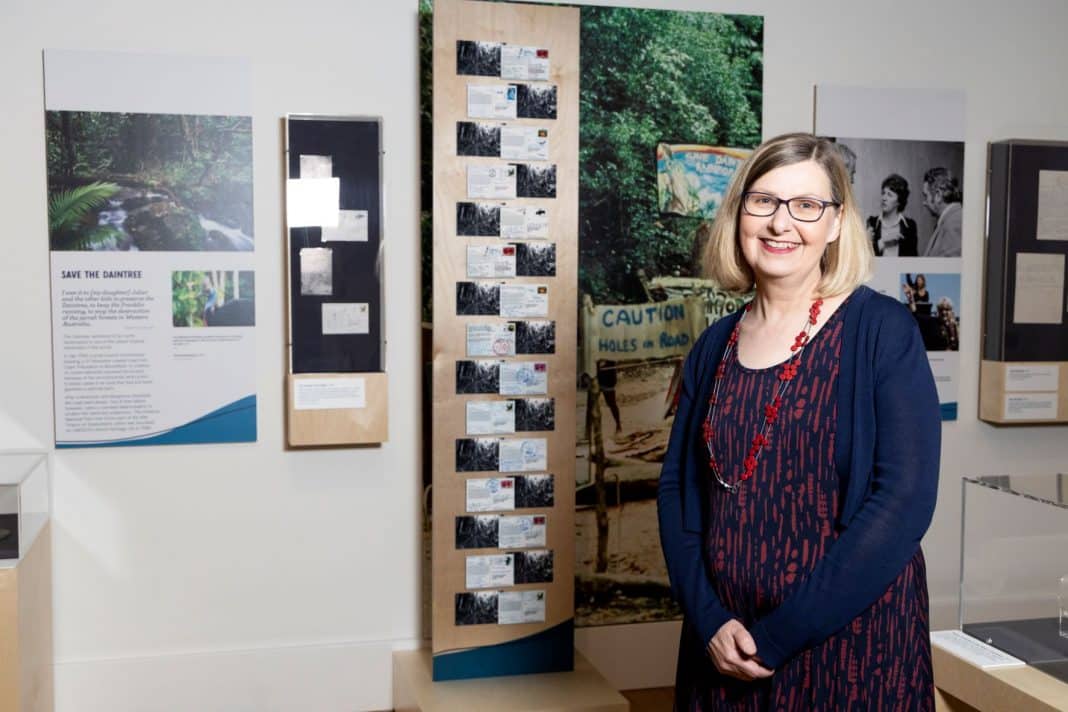It can happen with the loud bang of breaking down walls, a colourful splash at a protest, or through peaceful letter writing. Regardless of whether it burns fast and bright or slow and carefully, social change permanently alters a culture’s trajectory. Those who have altered the direction of modern Australia are celebrated in the National Archives of Australia’s newest exhibition Disrupt, Persist, Invent, on show until 12 June 2023.
Focusing on how change most often comes from within the community, guests are welcomed by a structure created with intersecting place cards. The cards encourage people to reflect on the notion of social change and provoke thought with questions.
Undercurrents of feminism, equality, environmentalism, land rights and First Nation issues run through the exhibition, as it explores the types of actions that create lasting change. Banding Together is the first of five themes; politics makes an appearance here, but the focus is on community groups like the Country Women’s Association (CWA). The message is how voices are amplified when they come together and how even seemingly small changes can have great impacts on the communities involved.
“Their [The CWA] hall backed onto a railway line that had lots of heavy good trains and the front road was very busy. Without the fence, the women couldn’t attend the meetings with their children so it limited their ability,” explains curator Catriona Donnelly.
Writing is the theme you move to next; this is where the Archives’ collection shines through, says Donnelly. Her favourite exhibits are those from the ‘Save the Daintree’ campaign. She says the protests were so powerful as they had both dangerous physical aspects with people burying themselves neck-deep in soil and standing in front of bulldozers, while peaceful protests saw hundreds of postcards being sent to Senator Don Chipp.
“I like to refer to this as the postcard attack. Imagine every day, you come in, you’re like another one and another one. So, it’s that kind of repetition of the same message over and over again; if you keep hearing it, somewhere along the line, you’ll start to recognise that it’s important,” Donnelly says.
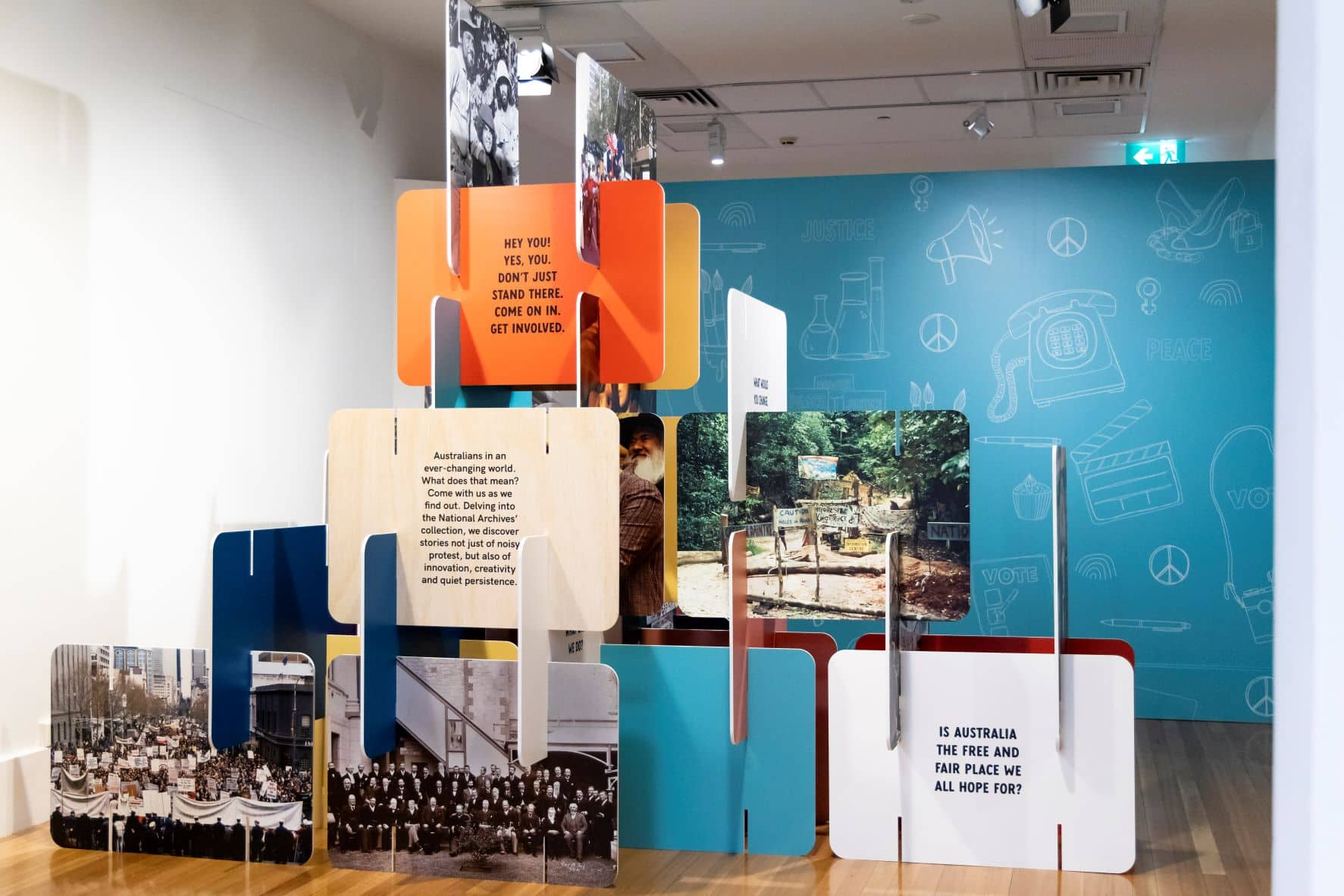
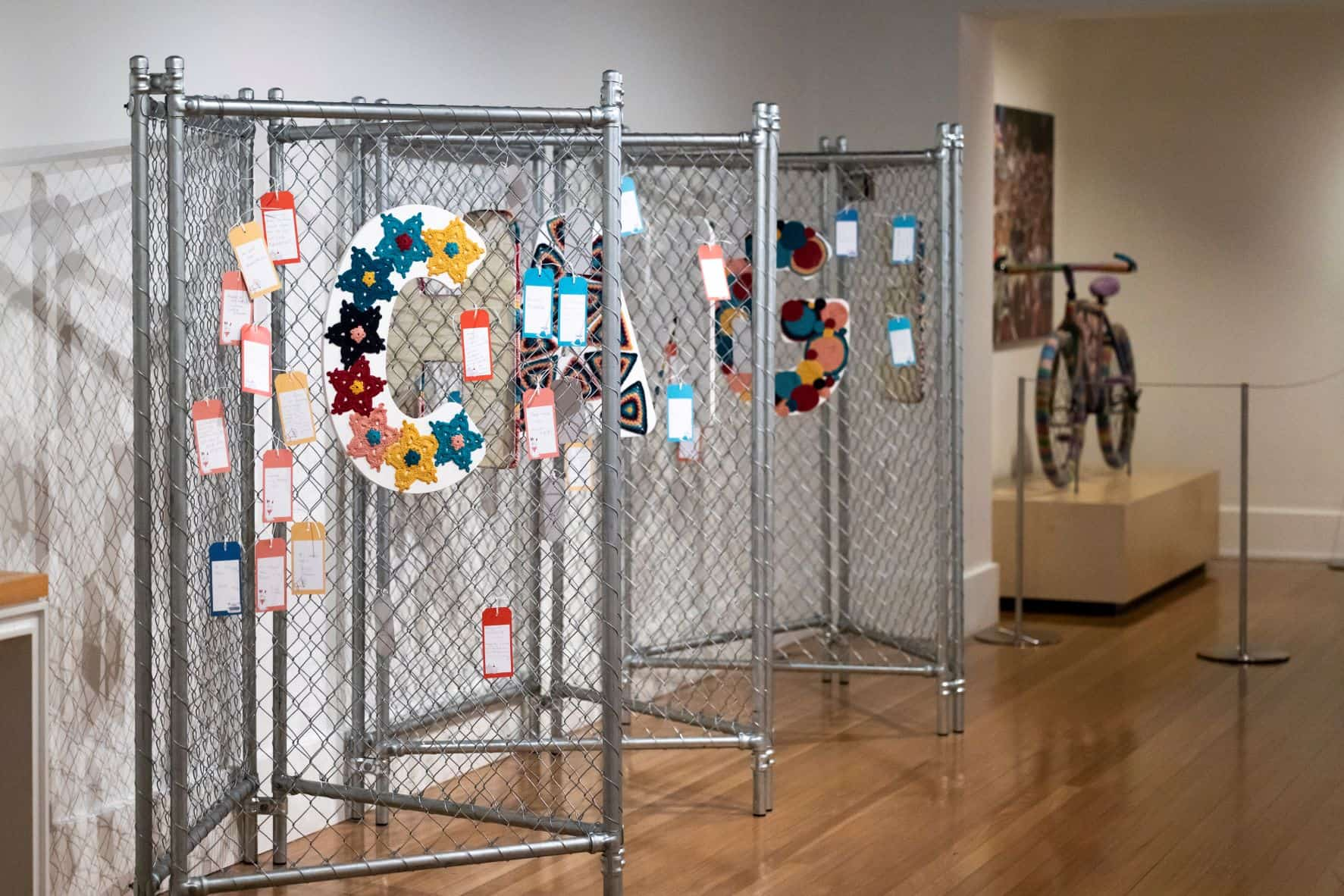
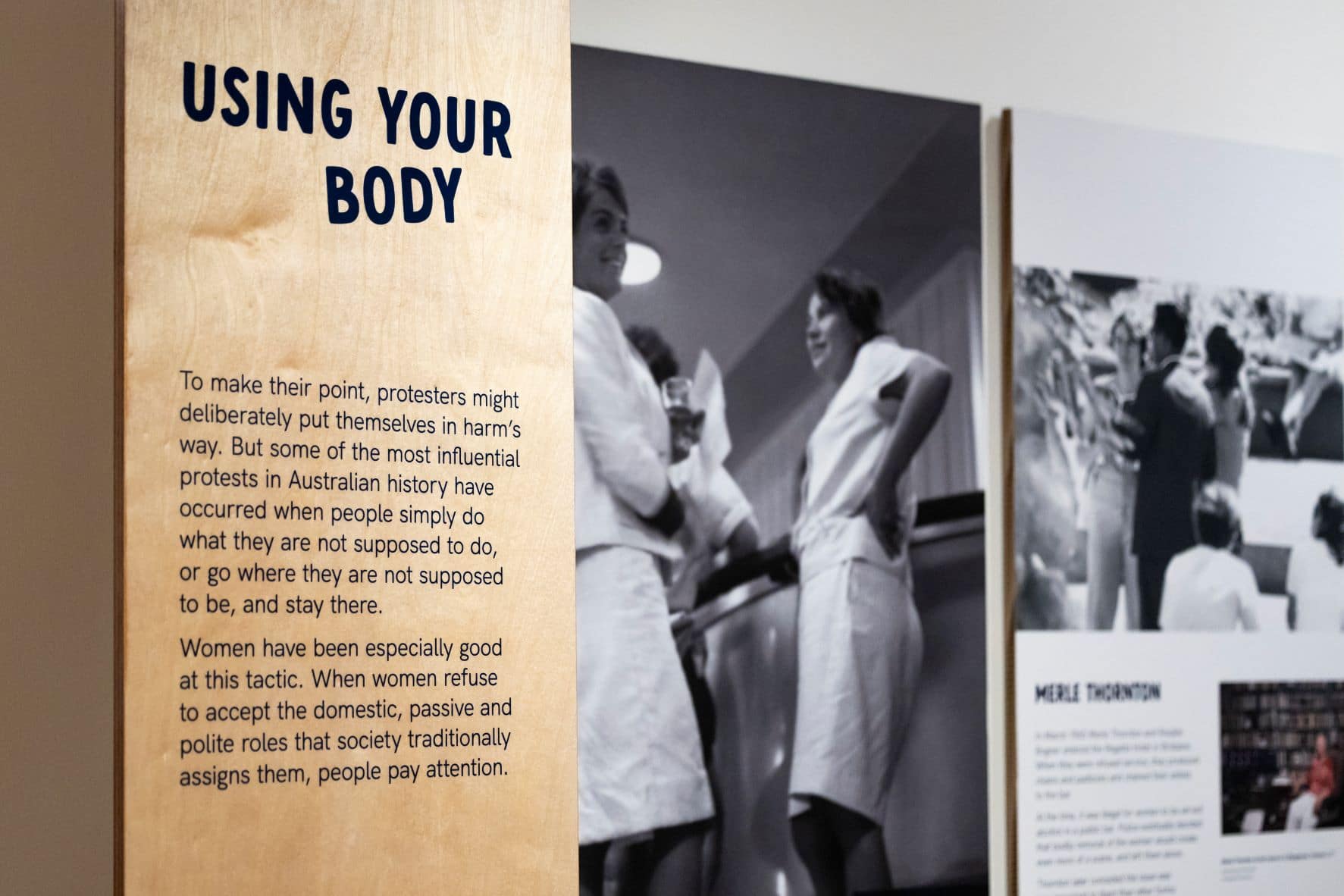
See how social change can be enacted through scientific and creative endeavours with photography, literature, arts, and inventions. A prototype technology machine that was used when developing Wi-Fi by scientists at CSIRO sits proudly in a display case and looking its age. The technology went on to change the world forever; no longer did social groups have to stuff envelopes and mail them to faceless names. They and everyone else can connect with people across the globe, seeing faces in real time through programs like Zoom.
“If you think about the last few years with COVID, if we didn’t have Wi-Fi what would that have been like? It just made such a huge difference to our lives of being able to stay connected with people,” she says.
Next, we move on to one of the most important acts of change, the idea that someone has to be Listening. This section explores ways to be heard, particularly by the government, covering some heavy topics like Kevin Rudd’s apology to the stolen generation and Julia Gillard’s apology for forced adoptions. Donnelly says the heavy stuff is important and just because it is hard doesn’t mean it shouldn’t be included.
“These objects here are grief-stricken. When a baby is born, often you might give a teddy bear or soft toys or clothes, it’s a gift of joy. But these objects, the teddy bear and the booties were left behind at Parliament House on the day that the apology was delivered. They both have little notes of mothers who had their children removed from them.”
To lighten the load, visitors are invited to add their own affirmations to tags on a metal fence embellished with the word ‘change’ and answer the question ‘How will you change the world?’
“It could be something simple such as catching the bus or composting your vegetables or not using plastic bags to put your fruit in when you go to the supermarket. It can be something little or you might aspire to be the prime minister,” Donnelly smiles.
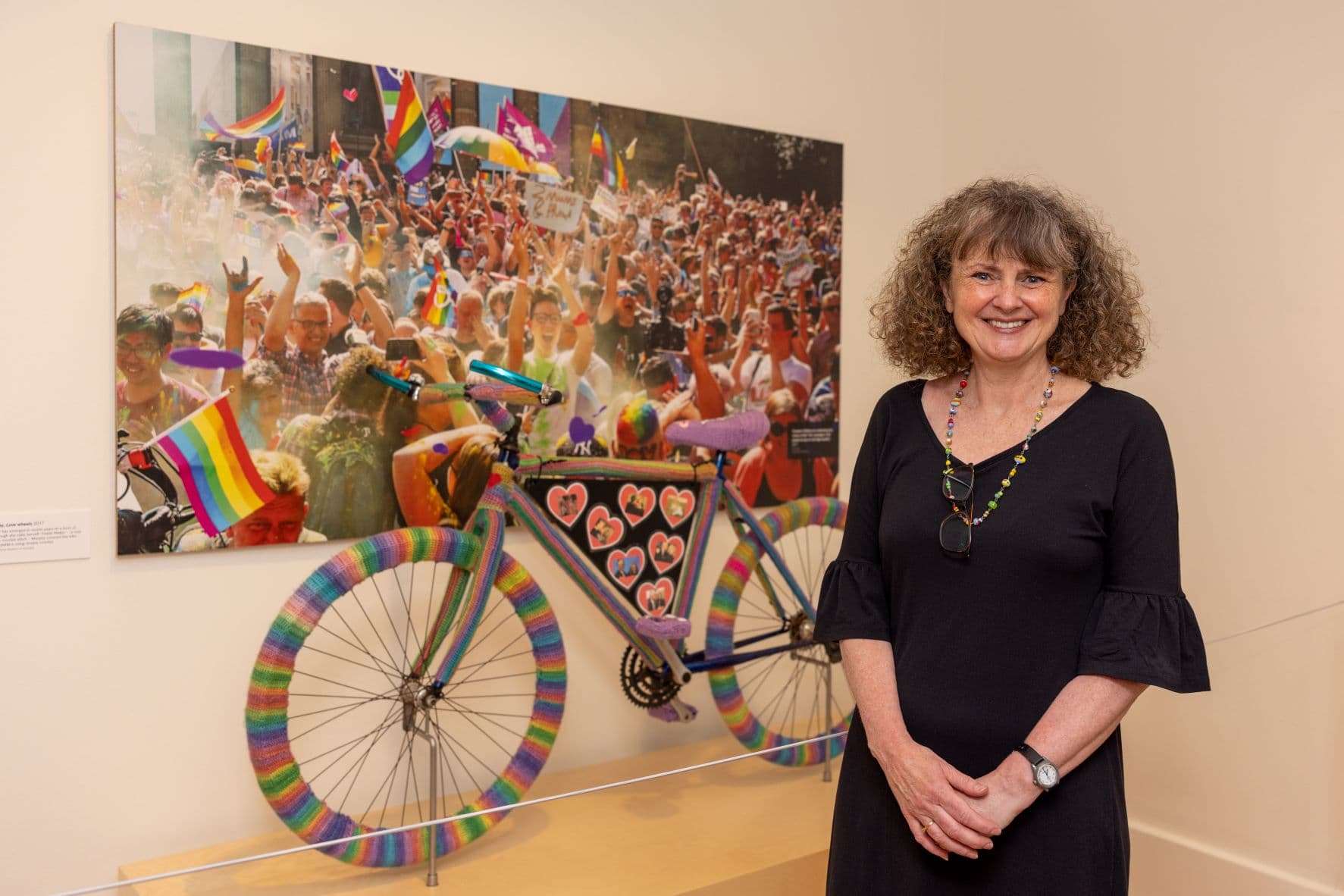
One of the hero pieces of the exhibition is Love Wheels, created by craftivist and yarn bomber Eloise Murphy. Wanting to make a small contribution to the marriage equality campaign, she undertook gentle protest through crochet. Listening to the debate on the radio, Murphy felt that people had lost sight of what the campaign was really about – the right to love and be loved.
“I remembered a quote from Malcolm Turnbull, where he talked about his relationship with his wife, Lucy, of 37 years. I thought, maybe on the bike, I could incorporate that quote, and other things about Malcolm and Lucy. Because really, it was about other people having the opportunity to have a marriage like you’d have, like, you were very lucky to have that,” Murphy smiles.
One side of the bike is embellished with the quote Turnbull said about his wife, while the opposite has photos of the loved-up pair. Murphy said she had this wild spur-of-the-moment idea to tie the bike up outside the PM’s home, only expected it to stay a couple of minutes. It lasted more than a few minutes but less than a week, however, Murphy’s creation resurfaced after the right to same-sex marriage had passed.
“On the day that the marriage equality bill passed in Parliament, Malcolm put a post on Facebook saying, ‘two months ago, this lady chained this crochet Love Wheels bike to the post outside our house. We don’t know who she is, we think that this should be in the National Gallery as a commemoration of this important moment in the nation’s history.’ So, we found each other and then there was a bidding war amongst numerous organisations wanting the bike,” Murphy says.
The bike is on loan from the National Museum of Australia and reminds us how important it is to seize the moment. From that moment, we see another that has defined history, the first men to pitch an umbrella at the Aboriginal Tent Embassy, along with security documents finding information on the men. We see how the first refuge for women escaping domestic violence came to be, with viewers able to opt to read questionnaires the women filled out, warning that these can be confronting.
The last section takes us to Stories, how a crisis is a catalyst for change. The Port Arthur massacre (1996) led to gun reform, while the campaign for restoring Lake Peddler led to the formation of The Greens political party. The exhibition ends with Jo Vallentine, who is also one of the first faces we see; Vallentine entered parliament in the Nuclear Disarmament Party and went on to become the first Greens senator.
“If you’re an activist, you don’t just suddenly wake up one day and go ‘I don’t really care anymore.’ For a lot of people, it is a whole lifetime of campaigning on various issues, finding that energy to continue and keep going, keep pushing for positive change.”
Witness the social evolution in Disrupt, Persist, Invent at the National Archives of Australia until 12 June 2023; naa.gov.au
Get all the latest Canberra news, sport, entertainment, lifestyle, competitions and more delivered straight to your inbox with the Canberra Daily Daily Newsletter. Sign up here.

